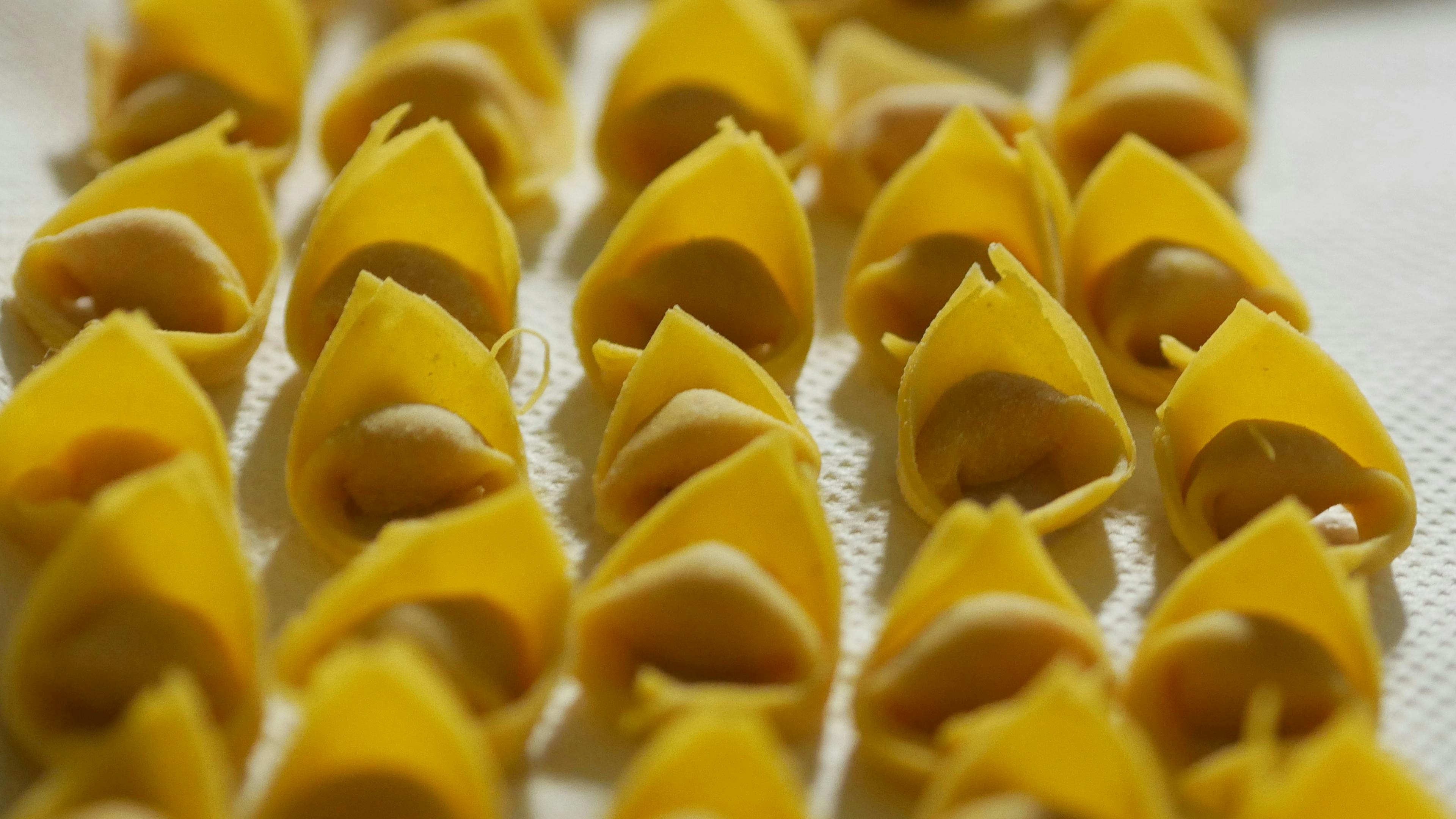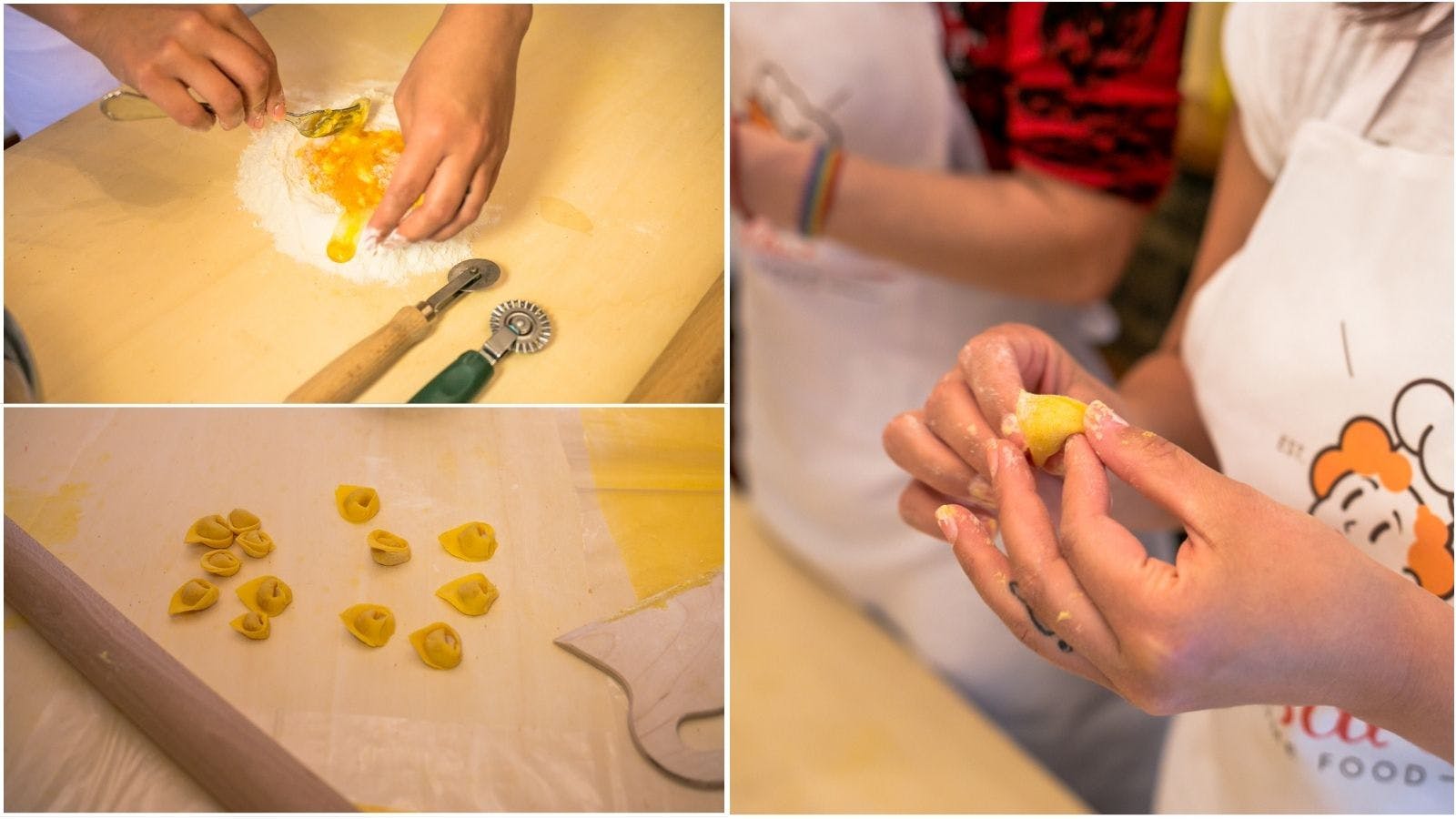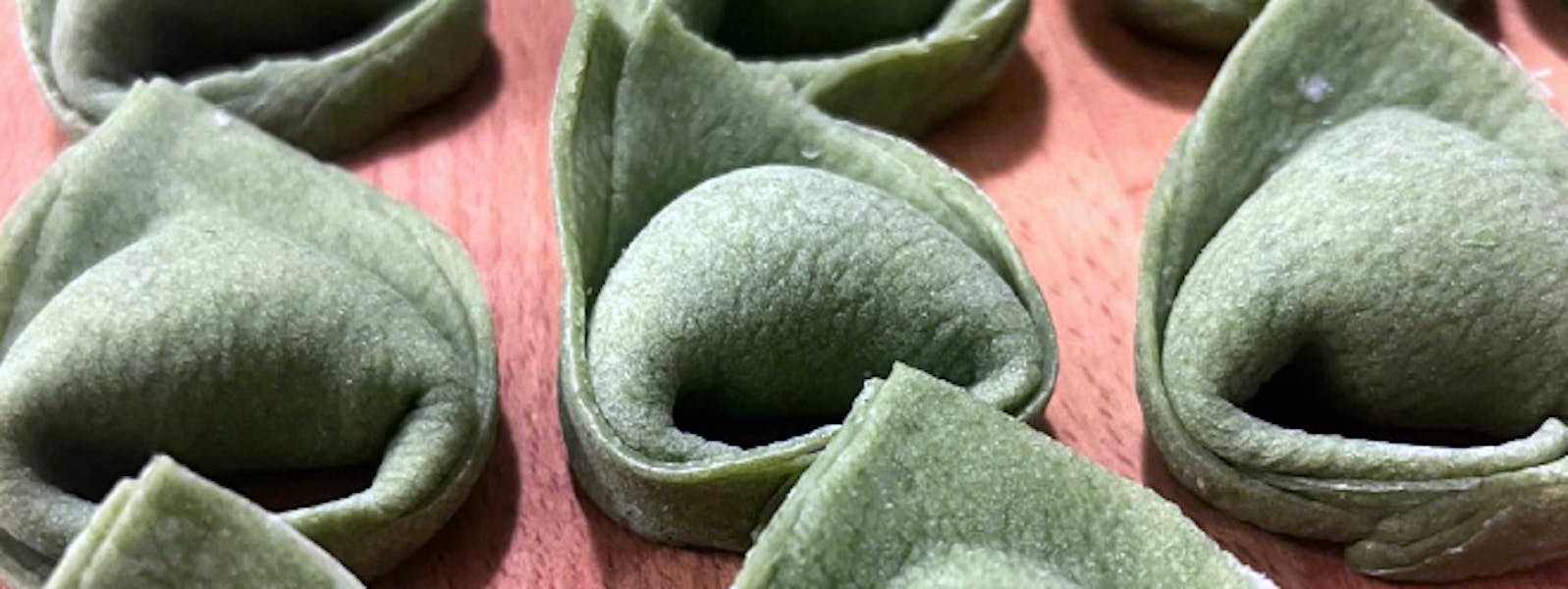

The Tortellini Day is a celebration that embodies the love for one of the most iconic dishes of Emilian and Italian cuisine: tortellini. This festivity originated in the United States, where National Tortellini Day, celebrated annually on February 13, pays tribute to the stuffed pasta, a symbol of conviviality and tradition. In Italy, tortellini are so cherished that a single day isn’t enough to honor them: entire events are dedicated to them, such as the Tortellini Festival in Bologna and the Tortellino Fair in Castelfranco Emilia.
On this occasion, our Cesarina Paola teaches us how to knead and cook the authentic tortellino, originating from Castelfranco Emilia and a symbol of Bologna.

Trotellini
Learn tips and secrets to create a perfect plate of tortellini from scratch.
Ingredients
- For the pasta:
- 100 g of all-purpose flour (00 flour)
- 1 medium egg
For the filling:- 100 g of prosciutto crudo (cured ham)
- 100 g of mortadella
- 100 g of pork loin in a single slice
- 150 g of Parmigiano Reggiano aged 36-40 months (grated)
- 1 egg (optional)
- Nutmeg to taste
- Salt to taste
Method
For the pasta:
- Place the flour on the work surface and create a well in the center.
- Crack the eggs into the well and beat them with a fork until the color is uniform.
- If needed, gradually add more flour from the edges to prevent the egg from spilling out.
- Keep mixing with the fork until the dough reaches a consistency that allows you to work with your hands. Use a spatula to detach the dough from the surface.
- Begin pressing the dough outward (not downward) using the palm of your hand, making it "roll."
- Add more flour if necessary, until the dough becomes smooth and non-sticky.
- Wrap the dough, lightly dusted with flour, in plastic wrap and let it rest for at least 30 minutes to allow the gluten to relax.
- After resting, roll the dough out with a rolling pin (in Bologna, we say we start to "stretch the dough") into a circle.
- Continue until the dough is so thin that light can pass through it. If using a pasta machine, use a flour mix (70% all-purpose flour and 30% semolina flour).
For the filling:
- Cook the pork loin slice in a pan with melted butter, salt, a splash of wine, and, once the wine evaporates, a little meat broth.
- Grind all the ingredients twice through a meat grinder (first with a medium setting, then with a fine one).
- Once you have a fine-textured mixture, add the grated Parmigiano Reggiano, 1 egg (optional), nutmeg, and salt if needed.
- Mix everything thoroughly and let it rest in the refrigerator for at least 24 hours.
Assembling the Tortellini:
- First, use a pastry cutter to cut squares about 2.5 cm on each side.
- Add the filling in a sufficient amount to allow for proper sealing.
- To form the tortellini, fold the square into a triangle, then fold the ends of the triangle toward you and seal them, pressing the edges together.
- Cook the tortellini in a good meat broth for a traditional broth-based dish, or with a cream sauce made from a small amount of cream and lots of Parmigiano Reggiano. In either case, the tortellini must be cooked in the meat broth first.
The Tortellino: between history and legend
The tortellino, with its ancient origins, has always been at the center of a heated debate between the people of Modena and Bologna, who both claim its birthplace. This rivalry mainly stems from the fact that, if Castelfranco Emilia is considered the birthplace of the tortellino, this town belonged to the province of Bologna until 1929, when it was reassigned to the province of Modena.

One of the legends surrounding its origin is of a mythological nature, featuring the goddess Venus. According to the tale, during the war between Modena and Bologna, due to the "Secchia rapita" (stolen bucket), Venus, Bacchus, and Mars sought refuge at the Corona inn in Castelfranco Emilia. The next morning, Mars and Bacchus departed, leaving Venus still asleep. Upon awakening and calling for the innkeeper, she revealed her perfect navel. Struck by her beauty, the innkeeper decided to recreate its shape, thus giving birth to the tortellino. The first mention of tortellini in Bologna dates back to 1289, in a document that describes several students arrested in an inn for gambling while eating tortellini. Today, Modena and Bologna share this culinary heritage, and tortellini is officially recognized as a typical product of Emilia-Romagna, but the battle for the paternity of this stuffed pasta remains ongoing.

In recent years, alongside the classic version in broth, chefs and enthusiasts have created surprising reinterpretations of the tortellino. Among the most famous "offspring" are the larger balanzoni (made with green pasta from spinach and a filling of ricotta and mortadella) and the smeraldini. Another notable creation is the scrigno di Venere (Venus' treasure), a pastry basket filled with tortellini, ragù, béchamel, and Parmigiano Reggiano.
These variations demonstrate the tortellino's adaptability, while still maintaining a strong connection to its traditional roots.